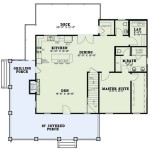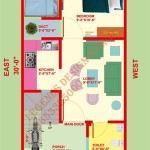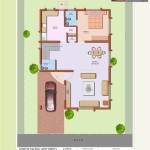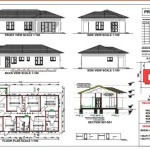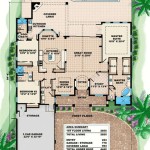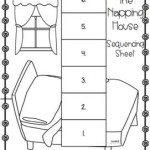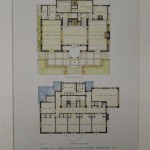Sample Home Floor Plans With Basements: Exploring the Possibilities
A basement can significantly enhance your home's functionality and living space. Whether you envision a cozy entertainment area, a spacious home office, or a well-equipped workshop, a basement offers a versatile canvas for your needs. Exploring sample home floor plans with basements can inspire you with creative possibilities and help you determine the ideal layout for your dream home.
The allure of a basement lies in its ability to provide additional square footage without altering the footprint of the main house. This extra space can be tailored to suit various lifestyles, from families seeking extra playrooms to homeowners desiring a dedicated guest suite. Let's delve into some key considerations when exploring sample floor plans with basements and discover how these layouts can elevate your home's design and functionality.
Basement Layout Considerations
Before diving into sample floor plans, it's crucial to understand the fundamental factors that influence basement design. The size of your basement, the height of the ceilings, and the location of windows and doors all play a significant role in determining the layout options available to you. Consider the following points as you explore different designs:
Basement Size and Functionality: The size of your basement will determine what you can realistically fit within it. A smaller basement might be ideal for a single functional space, such as a home office or a playroom. Conversely, larger basements provide flexibility for multiple rooms, such as a guest suite, a home theater, and a workout room.
Ceiling Heights: Basement ceilings can vary in height, affecting the overall feel and potential uses. Low ceilings might limit the space to storage or utility areas. However, higher ceilings can create more spacious and inviting areas suitable for living spaces or entertaining.
Windows and Natural Light: Windows provide natural light and ventilation, which are essential for creating comfortable living spaces. The location and size of windows will impact the flow of natural light into the basement, affecting its overall ambience and usability.
Exploring Sample Floor Plans
Now let's explore some sample floor plans with basements to illustrate the diverse possibilities for this valuable space.
Traditional Basement Layout
A traditional basement layout typically includes a recreation room, a laundry room, and a storage area. This configuration provides a balanced approach to functionality and leisure. The recreation room can be customized with a bar, a fireplace, or a comfortable seating arrangement, offering a space for entertainment and relaxation. The laundry room provides a dedicated space for washing and drying clothes, keeping the main living areas clutter-free. Finally, the storage area provides a dedicated space for storing seasonal items, tools, and other household essentials.
Modern Basement Layout
Modern basement layouts emphasize open-plan design and seamless integration with the main living areas. This layout often features a large living space that can be customized for a variety of purposes. The inclusion of large windows brings in ample natural light, enhancing the overall ambience. A modern basement might also include a guest suite, a home office, or a playroom, creating a versatile and adaptable living space.
Basement Apartment Layout
If you're looking to maximize the potential of your basement, consider designing a basement apartment. This layout typically includes a separate entrance, a kitchen, a bathroom, and a bedroom or two. A basement apartment can provide a comfortable and private space for guests, family members, or even serve as a rental unit, generating additional income.
Considerations for Basement Design
Beyond the layout, several other factors contribute to a successful basement design. These include:
Moisture Control: Basements are prone to moisture issues. Proper waterproofing and ventilation are essential to create a healthy and comfortable living environment.
Accessibility: Ensure that your basement design considers accessibility for all occupants. This may involve installing ramps, wider doorways, and other features to accommodate people with disabilities.
Safety: Implement safety features such as smoke detectors, carbon monoxide detectors, and emergency exits to ensure the well-being of those using the basement.
Exploring sample home floor plans with basements can inspire you with countless ideas for enhancing your home. By carefully considering layout options, design elements, and safety considerations, you can create a basement that perfectly complements your lifestyle and enhances the overall value of your property.

Basement Floor Plans With Free Templates And Design Tips

Basement Floor Plan

Stylish And Smart 2 Story House Plans With Basements Houseplans Blog Com

Stylish And Smart 2 Story House Plans With Basements Houseplans Blog Com

Basement Floor Plans

Basement Floor Plans Types Examples Considerations Cedreo

Versatile Spacious House Plans With Basements Houseplans Blog Com

Basement Floor Plans

Versatile Spacious House Plans With Basements Houseplans Blog Com

Basement Floor Plans Types Examples Considerations Cedreo

